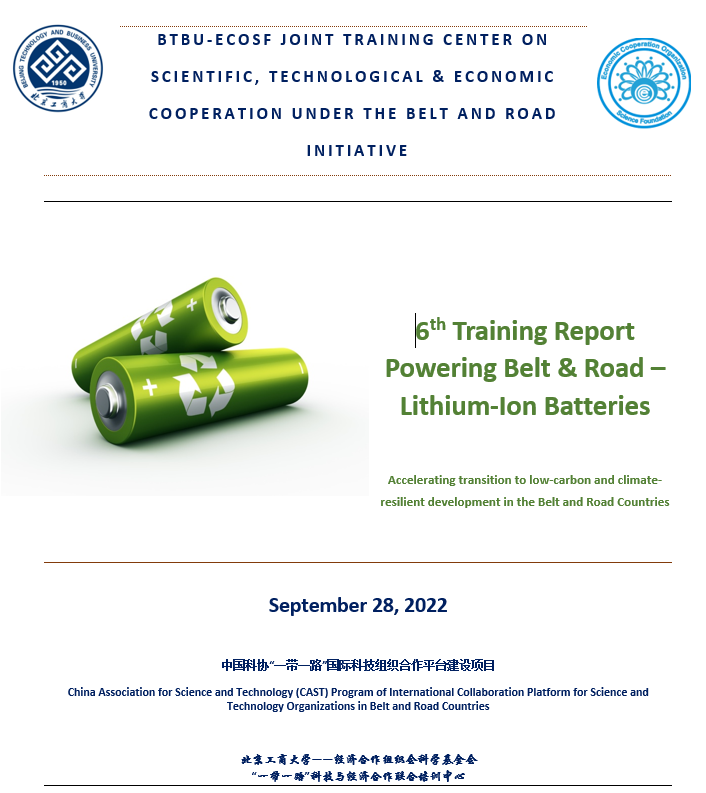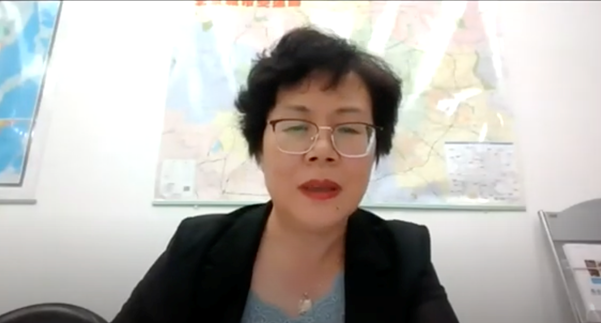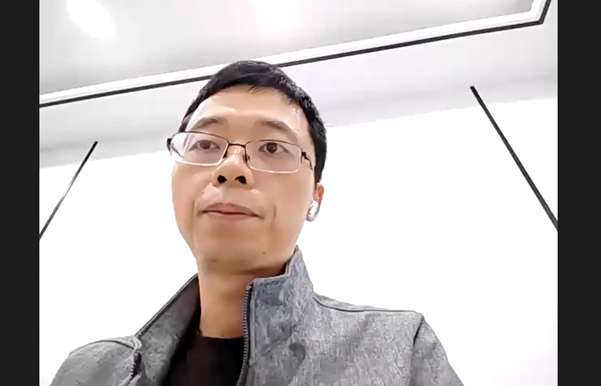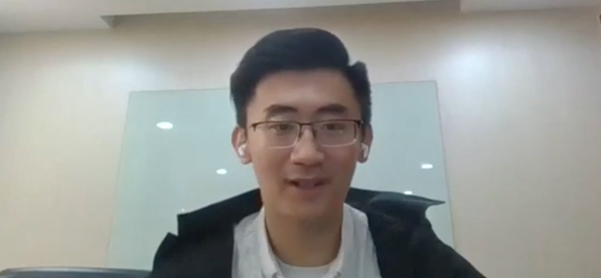6th Training Report Powering Belt & Road – Lithium-Ion Batteries
Go Back


Training Background
Energy storage market is on rise across the world. Every company, new or old, that is in the field of renewables or electric vehicles, is looking for even more reliable and affordable storage technology. Battery energy storage provides several valuable services and advantages in stationary, renewable grid services and electric mobility. In stationary storage and renewable grid service battery energy storage provides for frequency regulation, peak shaving as well as mitigating the fluctuations in generation from variability in renewable sources.
Lithium-ion (Li-ion) batteries today are poised to become the preferred choice for many applications across the electric mobility, grid storage and consumer electronics. This is because of inherent characteristics of the Li-ion batteries, which last longer and recharge faster, saving time, saving money, and reducing risk throughout the lifecycle. Hence, Lithium-ion batteries are the key technology to achieve net-zero carbon emissions in transportation, industrial equipment, and consumer electronics for the Belt and Road and ECO Member Countries.
The Joint Training Center fully recognizes the fact that the China has now been the world’s largest lithium battery consumer market for five consecutive years. In 2021, the global lithium-ion battery market reached 545 GWh, and China accounted for more than half of the total[1]. Strong demand for new energy vehicles is one of the main factors underpinning the recent surge in China’s lithium battery industry. By the end of 2021, China’s power battery production capacity accounted for about 70% of the global total. Additionally, six of the top 10 lithium battery manufacturers in the world are from China[2].
Hence, BTBU-ECOSF Joint Training Center hosted this virtual training on September 28, 2022. to bring China’s extensive expertise and best practices to help guide investments to develop a regional lithium-ion battery manufacturing value chain that creates equitable clean-energy manufacturing jobs in the Belt and Road (B&R) countries while mitigating climate change impacts. In this respect, BTBU – ECOSF Joint Training Center is planning to host its 6th training program entitled on “Powering Belt and Road – Lithium – ion batteries”
In this backdrop, this training program sought to understand and learnt from China’s expertise and capabilities about viable options for creating a strong lithium-ion manufacturing based in the B&R region, show cased best practices, success stories, and barriers on implementation of policies and programmes promoting low carbon development, and match the potential cooperation among BRI counties in Lithium-ion Battery production.
Opening Remarks: Mr. Liu Minhua, Vice President Beijing Technology and Business University

Mr. Liu Minhua, in his welcome remarks emphasized that transformative powers of Science, Technology and Innovation (STI) will be at the heart of industrial decarbonization in the Belt and Road region. Prof. Minhua paid her gratitude to the expert trainers from China and Pakistan for delivering important and resourceful training for the audience.
Prof. Minhua concluded that the successful transition towards low carbon development would heavily depend on fostering public-private partnerships that can accelerate deployment of technologies, promoting research and development, and human resource skills development. Hence the critical challenge for us is to enable delivery of our national development visions and goals – through low-carbon, climate-resilient or climate-compatible development plans and strategies, whereby the role of science and technology is overarching and gigantic.
Mr. Liu Minhua, expressed the hope that more scientists and young scholars will join their exchanges and cooperation in the future to jointly implement the global development initiative and promote global sustainable development.
He assured robust cooperation and collaboration will continue by the Joint Training Center to achieve the intended goals and promote emerging trends in industrial development and STI in the belt and road region.
Overview and Outlook of Global Battery Metals Industry.

Ms. Aidong presented the global overview of the Lithium-ion battery metals industry with special focus on China. She underlined that China is the world's largest manufacturing country, and the world's largest importer of metal minerals, occupying an extremely important position in the international bulk metal minerals market. China, Japan, and Korea also dominate the Cathode materials production. While China is the biggest producer in the world, accounting for 77% of the global in 2021.
At present, the cost of power battery accounts for nearly 40% of the EV, and the cost of cathode materials accounts for nearly 40% of the power battery. So, in electric vehicle era, mining has been linked with automobile industry unprecedentedly.
The global Electric Vehicles (EV) sales amounted 6.52 million units in 2021, up 108% year-on-year, with penetration rate growing from 4.2% in 2020 to 8.3% in 2021.
According to the International Energy Agency (IEA) statistics, based on the prediction of global EV sales of 34.25 million units in 2030, the installed battery capacity will reach 3,000 GWh.
Ms. Xu added that the rapid development of EV means a greater demand for upstream raw materials including nickel, cobalt, and lithium. Based on the EV sales of 6.52 million units in 2021, and the installed battery volume is 292.1 GWh.
From the supply side, the distribution of global battery metals resources is very uneven. Congo have the world's largest number of high-quality reserves of copper and cobalt. Indonesia accounts for 22.0% of global nickel reserves, the South American lithium triangle (Bolivia, Chile, Argentina) accounts for 56% of the global lithium reserve, 22.7% of the global copper reserve.
From the demand side, the global manufacturing industry is concentrated in East Asia, Europe, and North America the bulk exports from Australia, Chile, Brazil and other resource countries and strong reliance on imports of East Asia, Europe and North America constitute the basic pattern of the international metal mineral trade flow.
Big-Data based Cloud Battery Management System.

Mr. Hong delivered his lecture on the applications of Cloud-Based Battery Management Systems. He highlighted that the Electrochemical energy storage is the most extensive way of energy storage. Lithium-ion battery storage is the best candidate as the most suitable energy carrier. Mr. Hong underscored that with high penetration of EVs and energy storage application in the grid, lithium-ion battery industry is growing at a very rapid pace.
One of the most critical challenges with Lithium-ion batteries is to ensure their safety because at certain conditions and if misused, the batteries could catch fire. Lithium-ion batteries pose a high-risk which could result in catching fires or even explore if used under high stress conditions. Therefore, the role of Battery Management System (BMS) is important to maintain safe operations.
Mr. Hong underlined that the thermal runaway is usually caused by cell failure in the form of intermittent short circuit, lithium precipitation or other problems. It can also be caused by high voltage wire connection and voltage sampling wire shorted problems. The existing and traditional BMS current monitoring system has no ability to detect these problems in advance.
A cloud based BMS can early dignose fault, identify and match operations conditions, using cloud terminal collaborated control. The way to do is to install the battery data box in the vehicle to solve the problems of low and fixed transmission frequency of data. This can provide high quality data transmission and bi-directional frequency control. Whereas traditional BMS cannot meet all those requirements.
A cloud based BMS can report abnormalities and indicate accurate operation and maintenance advice according to the specific reason. One of the major advantages of using cloud based BMS is that it can accurately identify and pinpoint the cause of fault and sends early warnings well ahead of the accident and allow ample time to respond and mitigate to prevent the damage. Hence, the cloud-based battery management system is the way forward to activate early warning system for accurate fault detection and precise assessment of battery value.
The Essence of Carbon Neutrality: Energy Electrification and Green Electricity.

Mr. Keyu Li, Vice President of Green Harbor Investment delivered his lecture on investment prospects in the Lithium-ion battery market from the lens of carbon neutrality.
Mr. Li emphasized that carbon neutral targets in China, Europe, the United States and other regions have repeatedly exceeded expectations. As one of the most important scenarios on the energy demand side, energy vehicles have also become the focus of the development of all countries in the world. Mr. Li presented that China, the United States and Europe have increased their policy designation targets. China's 2025 penetration rate is expected to reach 25 percent, 20 percent in the United States and 35 percent in Europe, he added.
Mr. Li highlighted that the time node and path of electrification in various countries are clear, and the future is the golden decade for the development of electric vehicles and batteries. Ban of Internal Combustion Engines, increasing penetration of EVs and declining costs coupled with government incentives are driving the growth of EVs globally.
He further presented a case that technological advancement lies in the innovation of materials and the improvement of structural process. Among them, material innovation includes high nickel, cobalt free, sodium ion, etc.; and in structural innovation includes semi solid- and solid-state battery technology are the promising candidates. With the rapid changing and innovative paradigm, a new batch of competitive enterprises are expected to emerge.
Key takeaways on major Lithium-ion battery technologies:
- Lithium iron phosphate and ternary routes will coexist for a long term, and still be the mainstream in the next 10 years.
- Lithium Iron Phosphate: Structural innovations such as blade battery and CTP technology to improve energy density
- Solid-state battery: The technology is still immature, and the core challenge is to improve the conductivity and cycle times. It is expected to take the lead to promote "semi-solid" batteries within 5 years.
- Fuel cells: At present, revenue depends on the implementation of subsidies, and it is difficult to commercialize before 2030. However, leading companies in the segments are worth a strategic layout.
- Lithium-ion: Requires years of technique accumulation, mass production experience and customers’ certification. Relationship with auto manufacturers is important.
Lithium-ion Battery Manufacturing Processes and Practices in China

Dr. Chen gave an introduction of LongTTech Company which was established in 1999 and started its lithium-ion battery production back in 2006. The company now produces various lithium-ion cells with various geometrical shapes, including cylindrical and prismatic cells. Their flagship product is the lithium-iron phosphate cell and the total production of LFP was 2 GWh. LongTTech produce high quality cells that offer very long life with over 3500 cycles.
The LongTTech Pack production line has an annual capacity of 500 MW. It is equipped with advanced automatic process equipment and high precision classification facilities for sorting and matching, to ensure high consistency of capacity, internal resistance and voltage for each battery module.
The LongTTech lithium batteries offer excellent and high-rate performance and offer good low temperature performance and long-life cycle capacity. These are mainly used in low-speed electric vehicles, golf cart, vehicles with two/three wheels, scooter and forklifts. 48 V Series LFP Batteries are to provide reliable backup power for access network equipment, remote switch, mobile communications, transmission equipment and other systems.
Wrap up and Snapshot of Lithium-ion Battery Market in BRI/ECO Countries

Mr. Raza presented the snapshot of Lithium-ion battery market in the ECO region. He emphasized that there is a tremendous growth potential of Lithium-ion batteries market in the ECO region due to growing traction of both electric vehicles and renewable energy market. To achieve substantial penetration of electric vehicles and accelerate the transition to clean energy, the role of lithium-batteries is critical. Mr. Raza highlighted that currently, the role of ECO countries is limited in terms of local production of primary cells in the ECO Member States. Hence, most of the ECO Member Countries rely on import of batteries from China, Japan, and Korea, which translates into high import costs. The high volume of imports of Lithium-ion batteries in the region turns into high transaction and service costs for e-mobility and energy storage businesses. Thus, this high cost is unsustainable and results into low traction of e-mobility in the region.
Mr. Raza presented the global lithium-ion supply chain and the trade flows of major metals and products relating to Lithium-ion batteries. Lithium which is an important raw material for batteries is mainly extracted from South America; Argentina, Chile, and Bolivia which is also termed as the Lithium-Triangle.
The raw materials are then exported to mainly to China, Japan, and Korea where the raw material is processed into refined chemical products, included primary cells, and battery packs. In the ECO region, Turkey holds highest reserves of the Natural Graphite which is considered as a perfect Anode material for lithium-ion batteries. Mr. Raza also highlighted that with high reserves of Lithium in Afghanistan worth over billions of dollars, it is anticipated that in coming years Afghanistan could play a major role in Lithium mining and extraction.
Mr. Raza concluded that localization of lithium-ion batteries is the key to sustainable uptake of Electric Vehicles in the ECO Region with following recommendations:
- The ECO Member Countries need to develop a strategy for ‘localizing’ the EV and lithium battery supply chain. Major parts need to get localized in the ECO Countries;
- ECO Countries would have to secure supply of key raw materials; Lithium, Cobalt, and Nickel etc. for battery production;
- Leverage our existing partnership with China to establish manufacturing facilities in the B&R/ECO region;
- Develop local mining capacity in ECO Member Countries where critical metals for Lithium-ion batteries are prevalent;
- Achieve solid partnership with Chinese enterprises to build capacity in chemical refining in the ECO Countries;
- In the Short term – ECO Countries should focus on install battery assembly and pack manufacturing facilities;
- In the medium term – invest into cell manufacturing facilities;
- While in the long term– investments into local mining and chemical refining capacity should be ramped up;
- Raza concluded in order for the ECO region to achieve its intended Electric Vehicles (EV) penetration targets, respective Governments and relevant stakeholders need to strengthen their policy intervention in four key areas; (a) robust strategy (b) financial incentives (c) plan for reducing the cost of lithium-ion batteries.
Closing Remarks: President ECOSF Prof. Dr. Seyed Komail Tayebi

Prof. Seyed Komail Tayabi extended his deep appreciation to the leadership of Beijing Technology and Business University (BTBU) and especially Dr. Di Yuna, Director, BTBU-ECOSF Joint Training Center for their partnership and continuous support through this Center to promote the low carbon development in the Belt and Road countries, including ECO Member States.
President ECOSF Prof. Tayebi highlighted the fact that the China has now been the world’s largest lithium battery consumer market for five consecutive years. Hence, realizing the importance of this topic, ECOSF would strive to bring China’s extensive expertise and best practices to help guide investments to develop a regional lithium-ion battery manufacturing value chain that creates equitable clean-energy manufacturing jobs in the ECO Member Countries while mitigating climate change impacts, he underlined.
He was confident that this training on Lithium-ion batteries would be extremely valuable for the participants, and it will strengthen the exchange and cooperation between the Chinese green enterprises and participating BRI countries to explore investment and business expansion opportunities in the areas of renewable energy development, cleaner mobility solutions and smart and resilient power grid operations.
At the end Prof. Tayebi assured the partners that ECOSF will continue the cooperation and collaboration in the field of Science, Engineering, Technology, and Innovation for pursuing our common goals along the Belt and Road.
Click here to view full report.
[1] White Paper on China Lithium Battery Industry Development Index (2021)